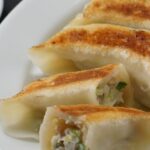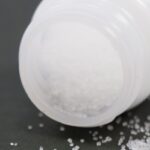
On January 17, 2022, the 66th meeting of the Food Labeling Section Meeting was held at the Consumer Commission of the Cabinet Office to discuss the partial revision of Food Labeling Standards. After inviting opinions on the proposed revision regarding nutrients, genetic modification, etc. (from October 27 to November 26, 2021), the partial revisions are scheduled to be promulgated by the end of March 2022 and go into effect on the same day. I would like to summarize the main revisions based on the Food Labeling Section Meeting’s document “Partial revisions to Food Labeling Standards (Consumer Affairs Agency).
Main Points
- Integration and consolidation of fat analysis methods, and addition of new methods for chromium, selenium, and iodine analysis.
- Addition of “Mustard greens” to agricultural products subject to GMO labeling.
- Deleting “High oleic acid” from the list of specified genetically modified agricultural products.
About nutrients
The revision of the analysis methods in the 2020 edition of the Standard Tables of Food Composition in Japan (8th revision), published by the Ministry of Education, Culture, Sports, Science and Technology in December 2020, can be said to lead to this revision. The following is an excerpt from the document “Regarding Partial Revision of Food Labeling Standards”.
The official methods for nutrients, etc. are specified in Appended Table 9 of the Standards and in the attached methods of analysis of nutrients, etc. in “Regarding Food Labeling Standards”, (hereinafter referred to as “Notification of Analysis, etc.”). Some issues have been pointed out regarding the operation of the Notification of Analysis, etc., such as the fact that there are cases where methods other than those described in the Notification of Analysis, etc. are more suitable for quantification.
In addition to this, the 2020 edition of the Standard Tables of Food Composition in Japan (8th revision) published by the Ministry of Education, Culture, Sports, Science and Technology (MEXT) has added new analysis methods for nutrients, etc. Based on this, and taking into consideration the feasibility by business operators and the possibility of verification by prefectures, the Consumer Affairs Agency conducted a “Research and Study Project on Analysis Methods for Nutrients in Food Labeling Standards” to discuss the necessity of revising the related acts and regulations, etc.
And based on the results of the above discussion of the research and study project, the current revision proposal was presented.
Based on the discussions in the “Research and Study Project on Analysis Methods for Nutrients in Food Labeling Standards”, Appended Table 9 of the Standards, which stipulates analysis methods for nutrients, labeling of Foods with Nutrient Function Claims and nutrient content claims, will be revised, and new analysis methods will be added.
Measurement and calculation methods other than the Gelber method specified in the current Appended Table 9 of the Standards, and the acid/ammonia decomposition method, which was judged appropriate to be added in the “Research and Study Project on Analysis Methods for Nutrients in Food Labeling Standards”, shall be reorganized as “solvent extraction-gravimetric method”. The specific analysis methods, etc. will continue to be specified in Notification of Analysis, etc.
The revised part is Appended Table 9 of the Food Labeling Standards. The following is a summary of the current and proposed revisions, excerpting only “Nutrients and Calories” and “Measurement and calculation methods” in Appended Table 9.
| Nutrients and calories | Measurement and calculation methods | |
|---|---|---|
| Fat | Current | Ether extraction method, Chloroform-Methanol mixture extraction method, Gerber method, Acid decomposition method, or Roese-Gottlieb method |
| The revision bill | Gerber method or Solvent extraction-gravimetric method | |
| Chromium | Current | Atomic absorption spectrophotometry or Inductively Coupled Plasma Atomic Emission Spectroscopy |
| The revision bill | Atomic absorption spectrophotometry, Inductively Coupled Plasma Atomic Emission Spectroscopy or Inductively Coupled Plasma Mass Spectrometry | |
| Selenium | Current | Fluorography or Atomic absorption spectrophotometry |
| The revision bill | Fluorography, Atomic absorption spectrophotometryor Inductively Coupled Plasma Mass Spectrometry | |
| Iodine | Current | Titration method or Gas chromatograph method |
| The revision bill | Titration method, Gas Chromatographor Inductively Coupled Plasma Mass Spectrometry | |
In addition, “Standard Value per 100kcal for high claims” for “Vitamin K” in the appended Table 12 is changed from 30㎍ to 15㎍.
Although the method of calculating calorific value was changed in the 2020 edition of the Standard Tables of Food Composition in Japan (8th revision) (Calculated value is obtained from multiplication of protein (as amino acid composition), fat (as triacylglycerol equivalents of fatty acids), available carbohydrates (monosaccharide equivalents), sugar alcohols, dietary fiber, organic acids, and alcohols by the energy conversion factor of each component), as a result of the research and study project, it was decided to continue calculating calorific value using the “modified Atwater method.
About Genetic Modification
There are two major revisions planned: the addition of “Mustard greens” and the deletion of “High oleic acid”.
Here are the excerpts on the background and outline of the revision from “Regarding Partial Revision of Food Labeling Standards” for each of the above.
Following a safety review of genetically modified mustard greens (hereinafter referred to as “GM mustard greens”) by the Ministry of Health, Labor and Welfare, GM mustard greens-derived foods are expected to be distributed in Japan.
For this purpose, “Mustard greens” shall be added to the target agricultural products listed in Appended Tables 16 and 17 of the Standards.
Since GM mustard greens, which are undergoing safety review at this time, are a variety for oil and are expected to be distributed only as edible oil, the processed foods pertaining to mustard greens in Appended Table 17 shall not be specified.
High oleic acid genetically modified soybeans are considered as “Specified genetically modified agricultural products” whose composition, nutritional value, and other characteristics are significantly different from those of normal agricultural products because they were produced using recombinant DNA technology.
Now that soybeans with the high oleic acid trait can be produced by conventional breeding, high oleic acid genetically modified soybeans no longer fall under the definition of “Specified genetically modified agricultural products”. For this reason, “High oleic acid” will be deleted from the upper column of Appended Table 18 of the Standards, which stipulates the subject of mandatory labeling as “Specified genetically modified agricultural products”.
The revised parts are Appended Table 16, 17, and 18 of the Food Labeling Standards.
Appended Table 16 (related Article 2)
| [1-8 omitted] 9 Mustard greens [Added] |
Appended Table 17 (related Article 3, Article 9)
| Target agricultural products | Processed foods |
|---|---|
| (Omitted) | |
| Mustard greens [Added] |
Appended Table 18 (related Article 3, Article 18)
| Form and characteristics | Processed foods | Target agricultural products | |
|---|---|---|---|
| Current | High oleic acid | 1 Food made mainly from soybeans (except ones which do not have form and characteristics listed in the left column* after being defatted) 2 Food made mainly from an ingredient listed in 1 |
Soybean |
| Stearidonic acid production | |||
| The revision bill | [Deleted] |
As the revised standards do not prevent the labeling of “High oleic acid” traits, businesses operators wishing to claim high oleic acid traits as an added value may continue to do so on a voluntary basis based on the evidence. In addition, when claiming the use of “High oleic acid soybeans”, the label must be in accordance with “Matters concerning special ingredients, etc.”.
With regard to “soy sauce” and “edible vegetable oils and fats” in Appended Table 22 of the Food Labeling Standards (Prohibited labeling items), the wording of the cited sections has been changed in accordance with the revision of the Japanese Agricultural Standards (JAS).
Future schedules
It is scheduled to be promulgated and enforced on the same day by the end of March 2022. Although the revision does not require immediate correction of labeling, it is advisable to check again if you handle products with the relevant labeling.
References
- 66th Food Labeling Section Meeting the Consumer Commission
- Report by Research and Study Project on Analysis Methods for Nutrients in Food Labeling Standards
Share/Like/Follow:
Newsletter Signup
We issue monthly e-newsletters, which provide you with the latest updates on food labeling/regulations in Japan.
If you want to make sure to not miss any issue, please click below.
Related Service
Research Services on Ingredients & Food Labeling -For the Japanese Market-
We verify the conformity of ingredients and additives with the standards for use in Japan based on specifications such as formulation lists. We also verify the conformity of the proposed labeling of ingredient names, nutrients, etc. with the labeling standards based on specifications such as formulation lists.

Label bank Co., Ltd. CEO (Founder)
Born in Japan. Working on solving various issues related to food labeling operations. Also regularly gives lectures for various organizations in Japan.
Co-author of ‘Latest edition: Guide book Food Labeling Law and related business practical points – from scratch (Japanese version only)’ (DAI-ICHI HOKI CO., LTD/2019).




